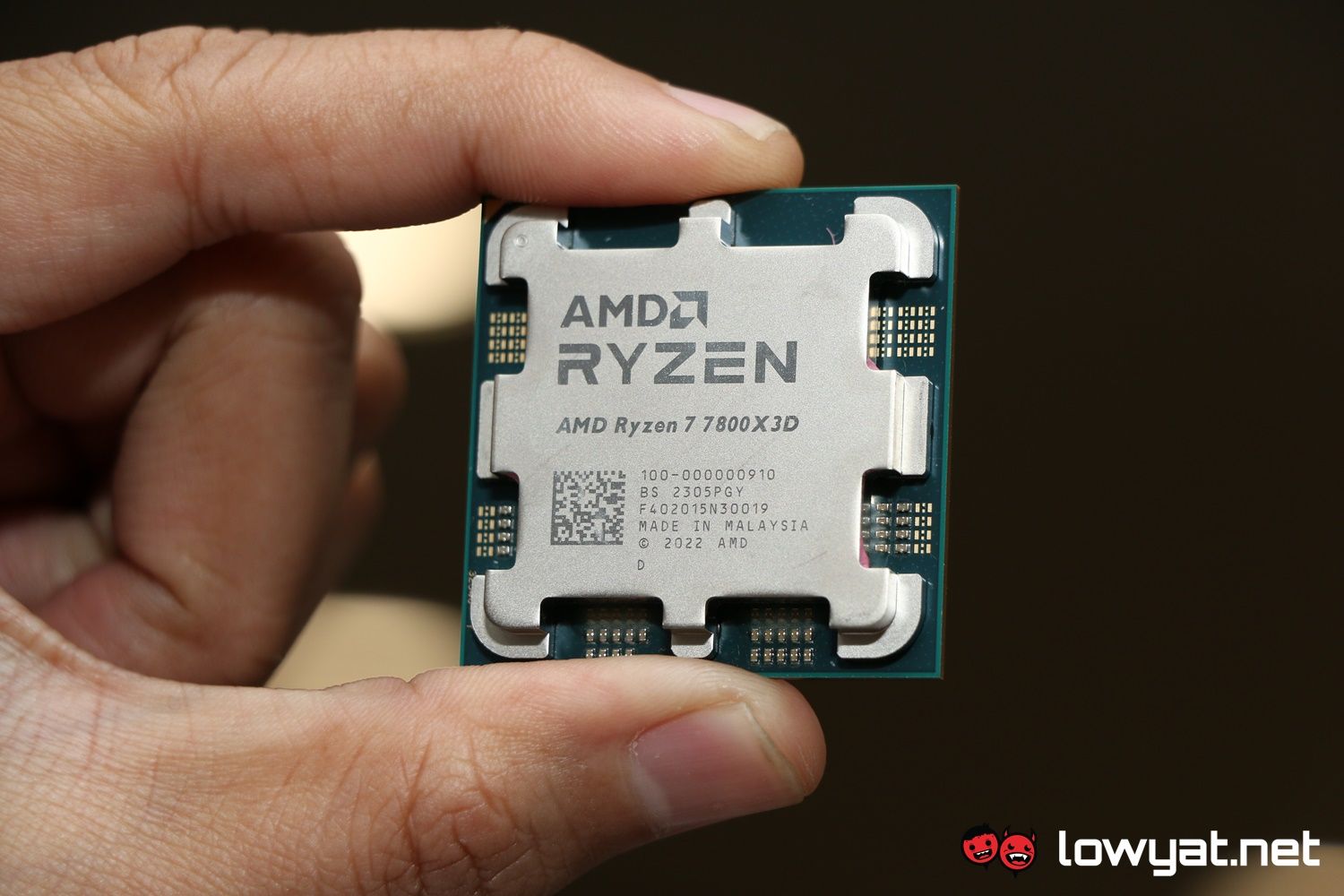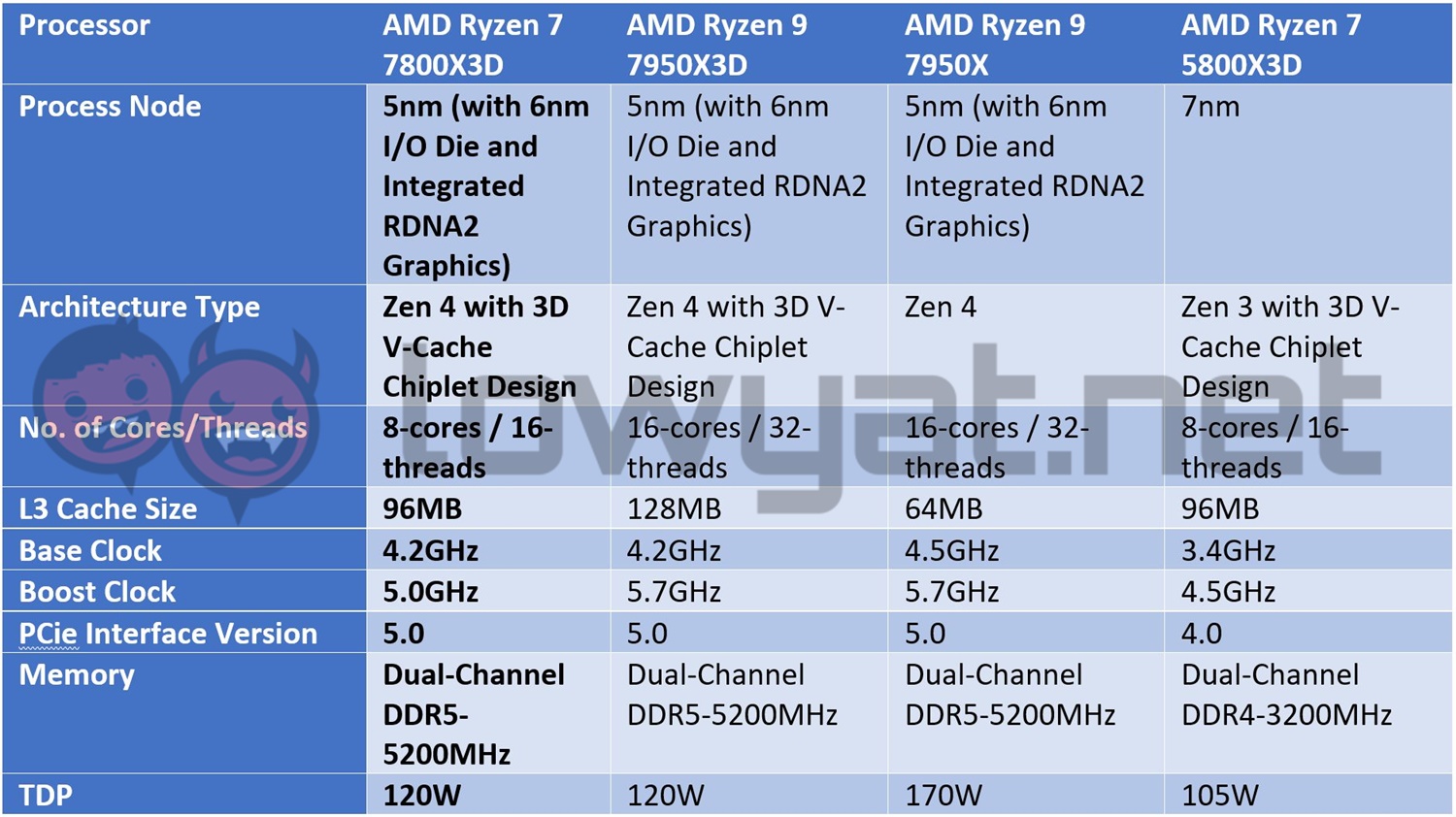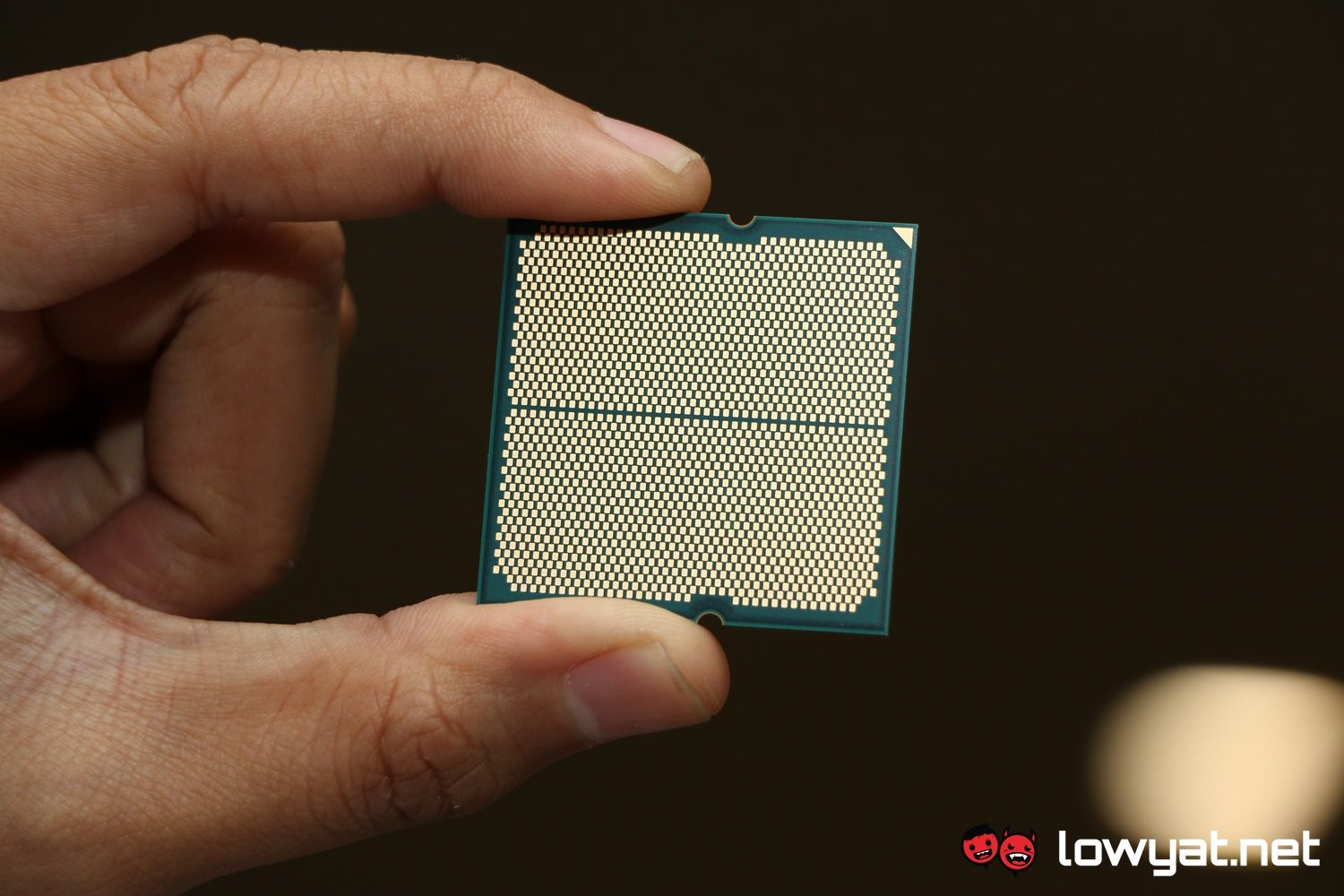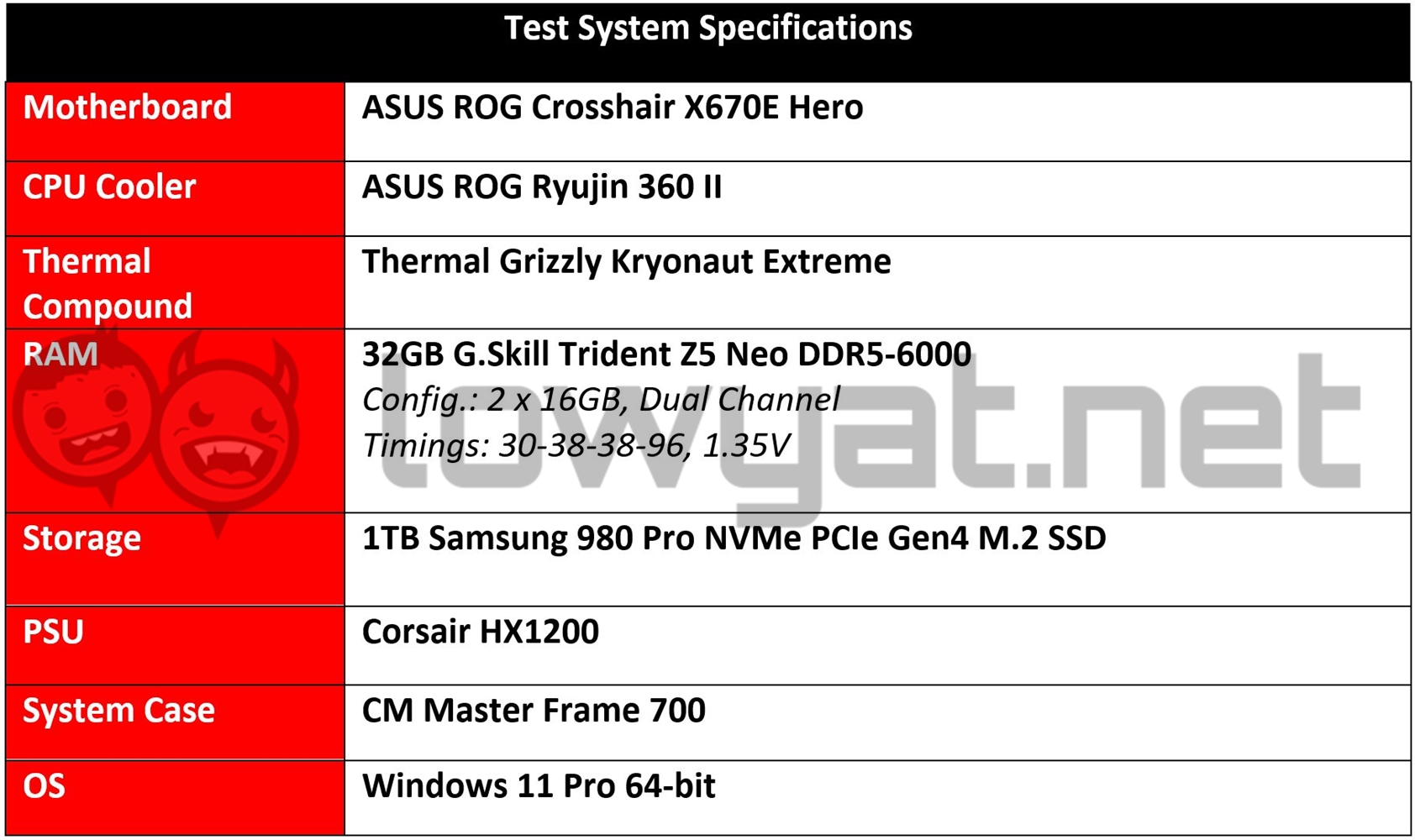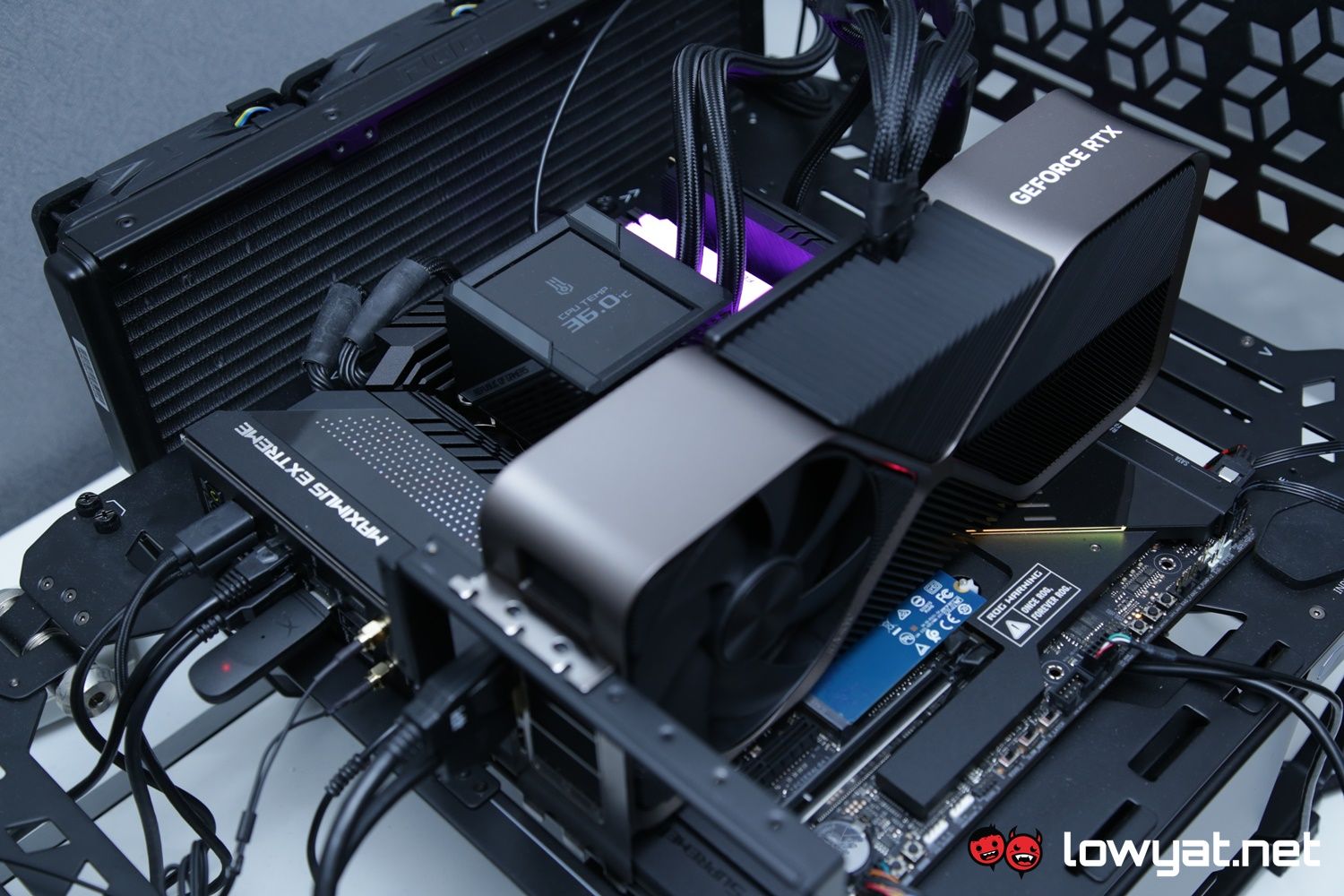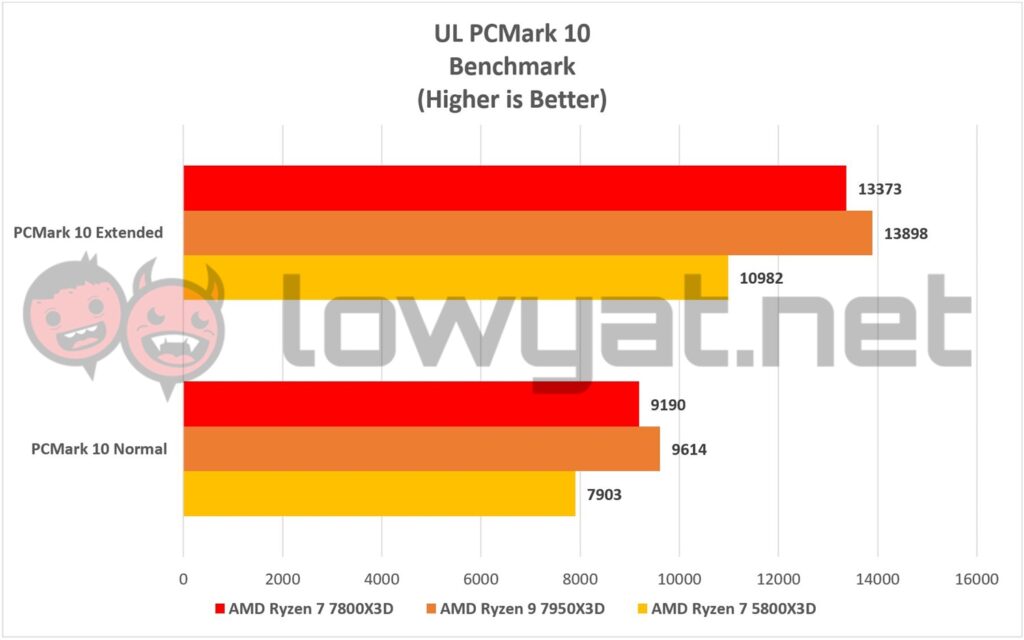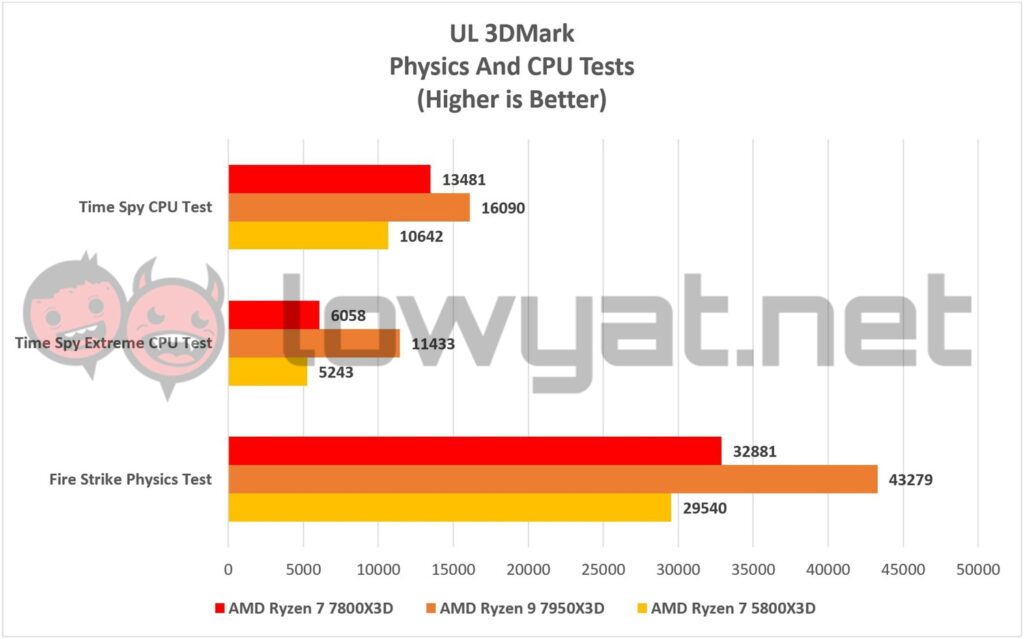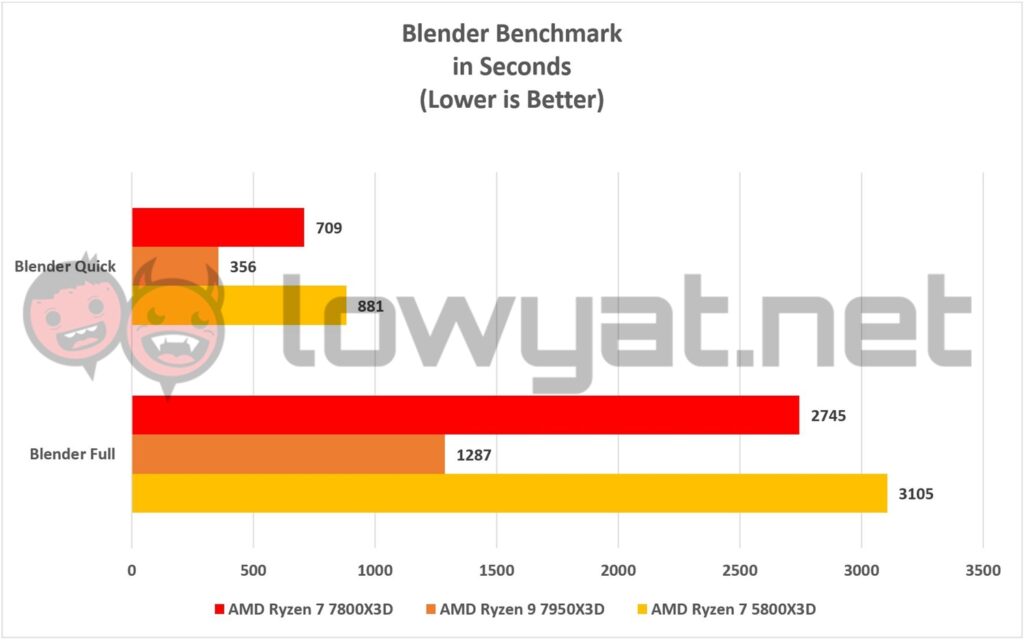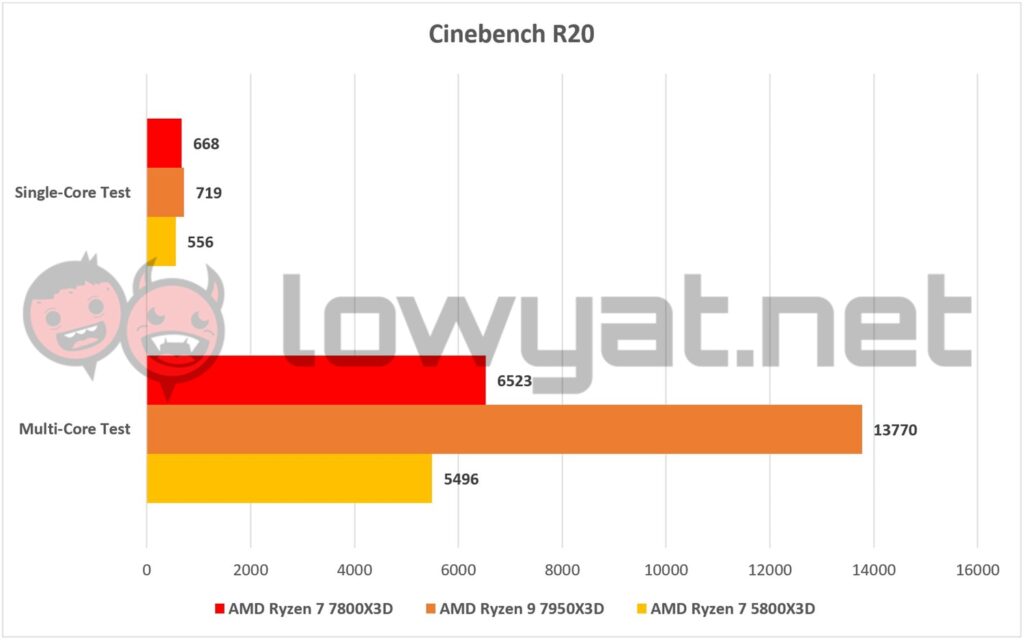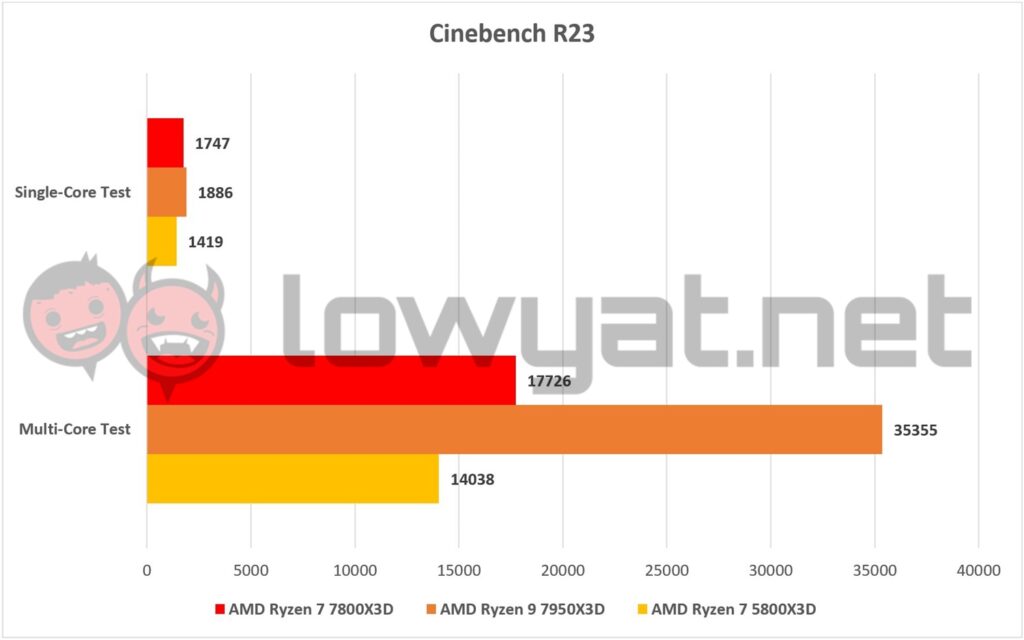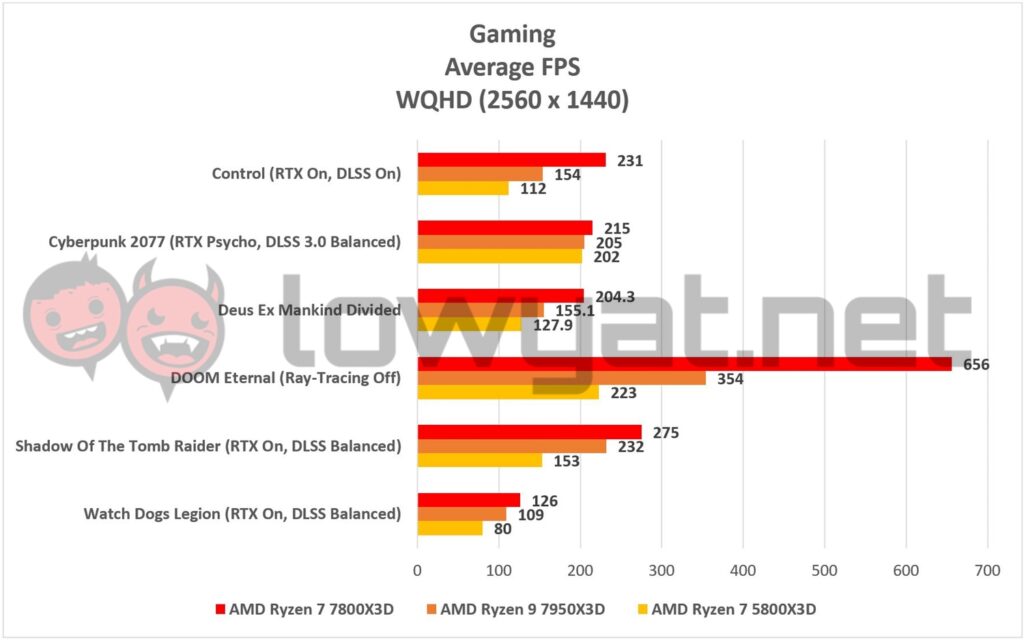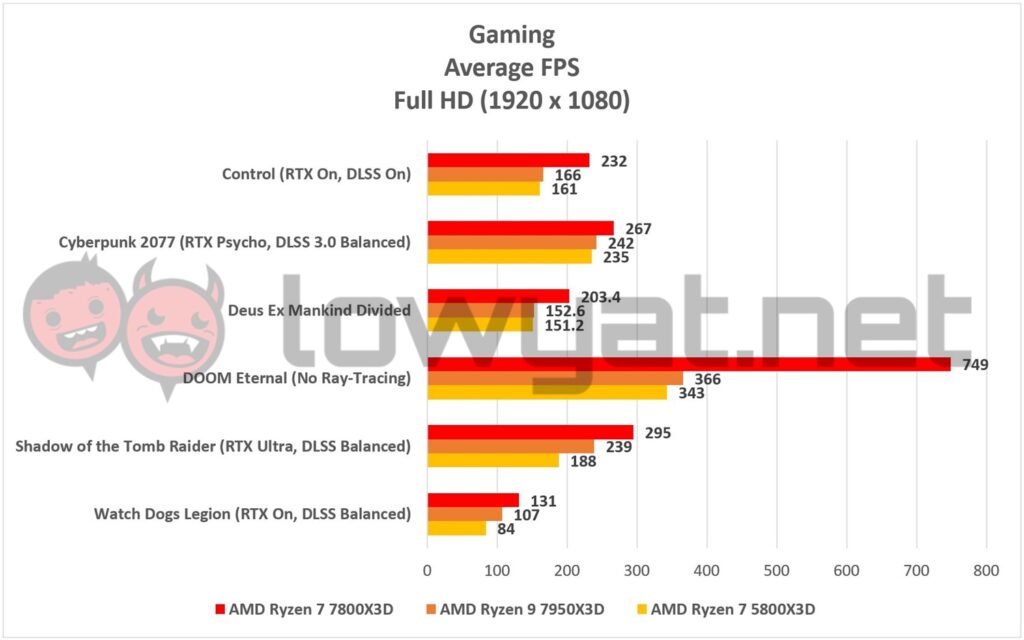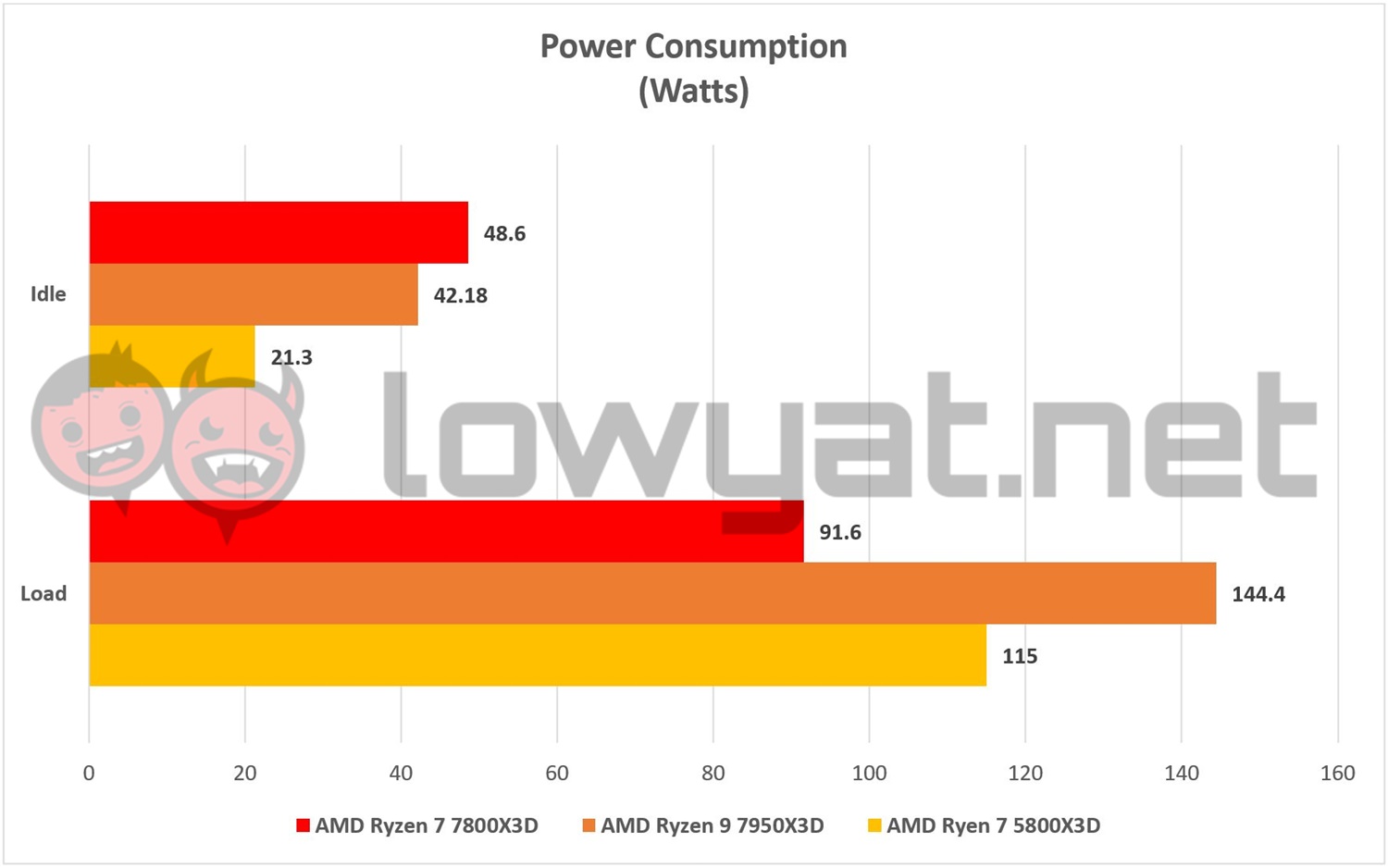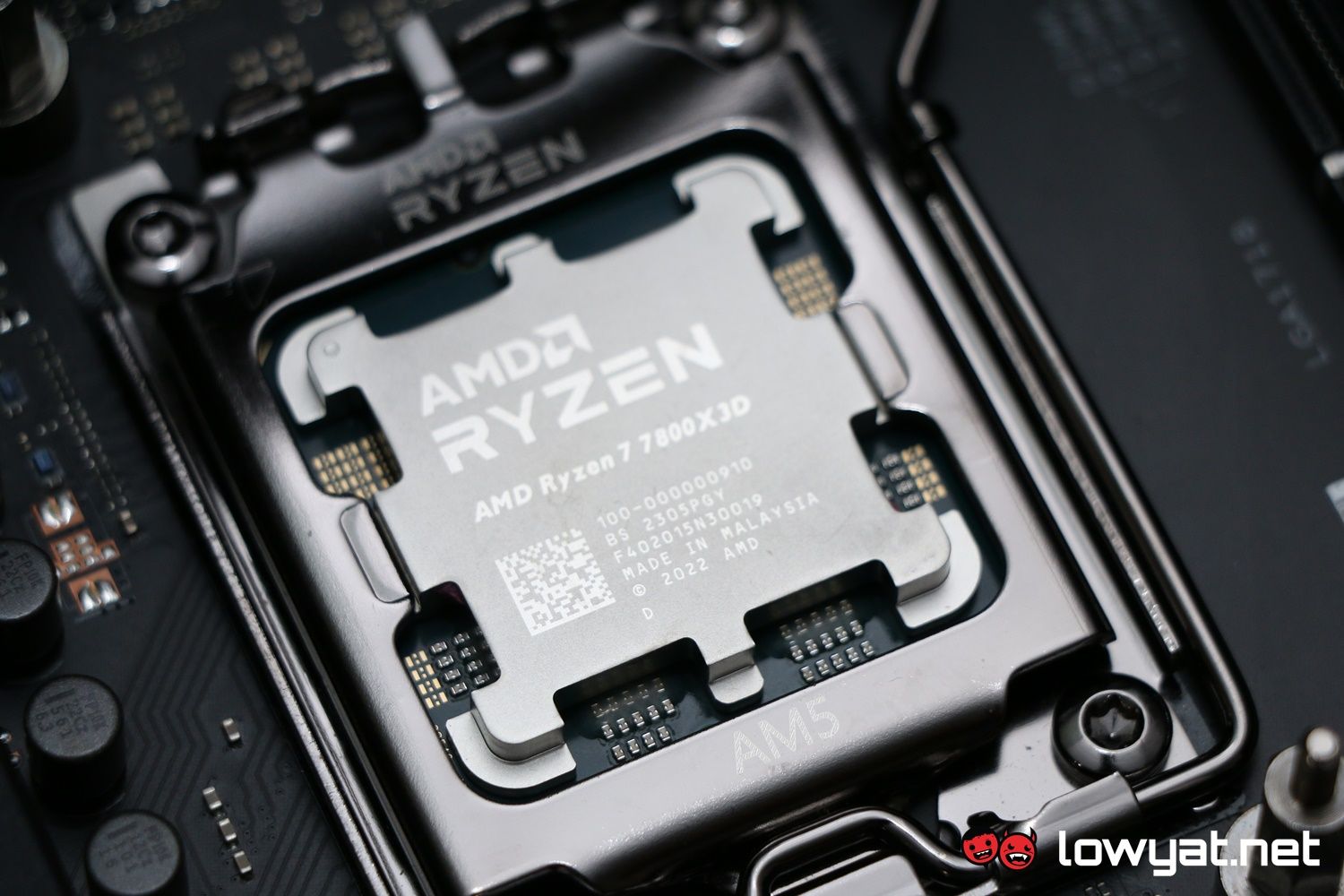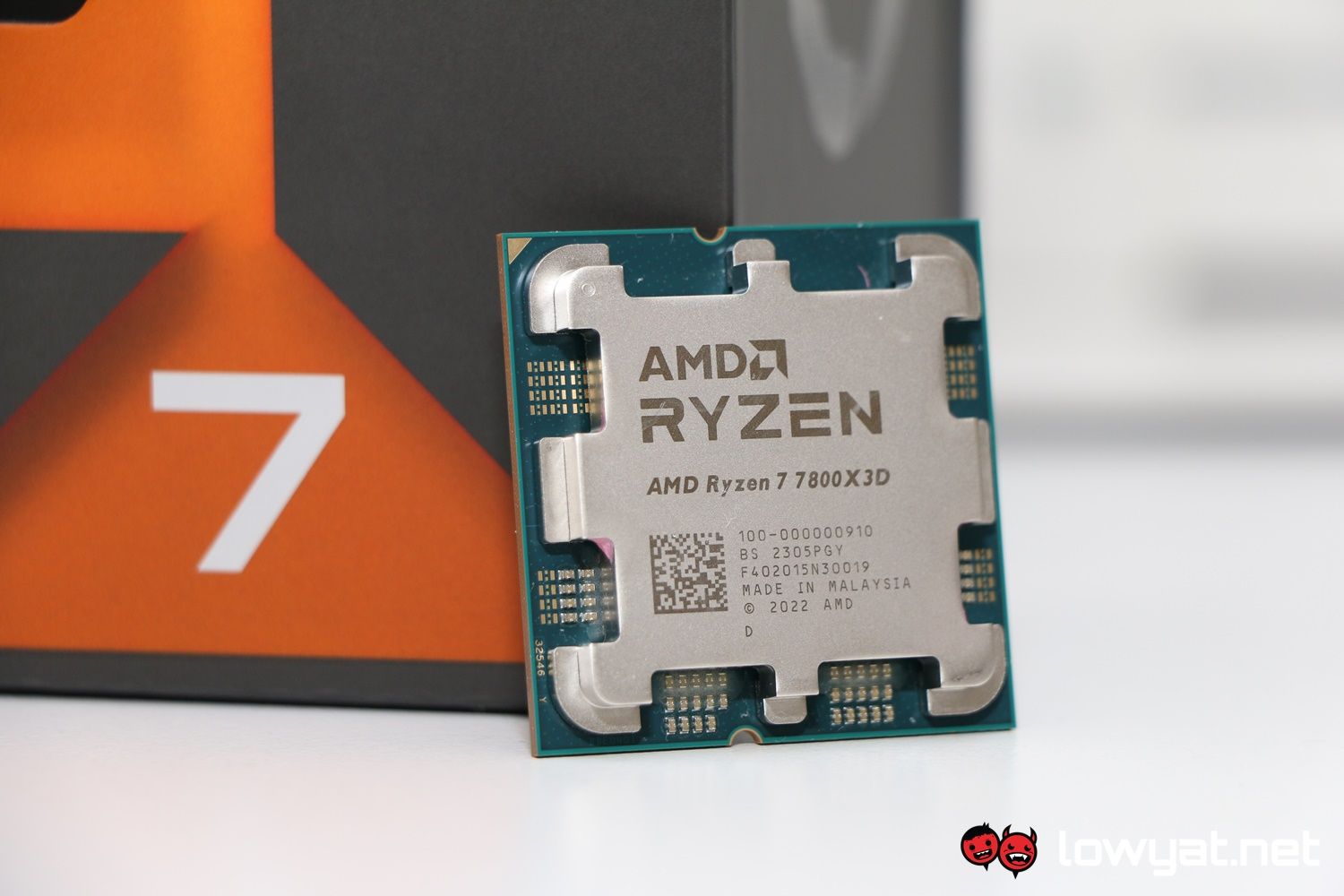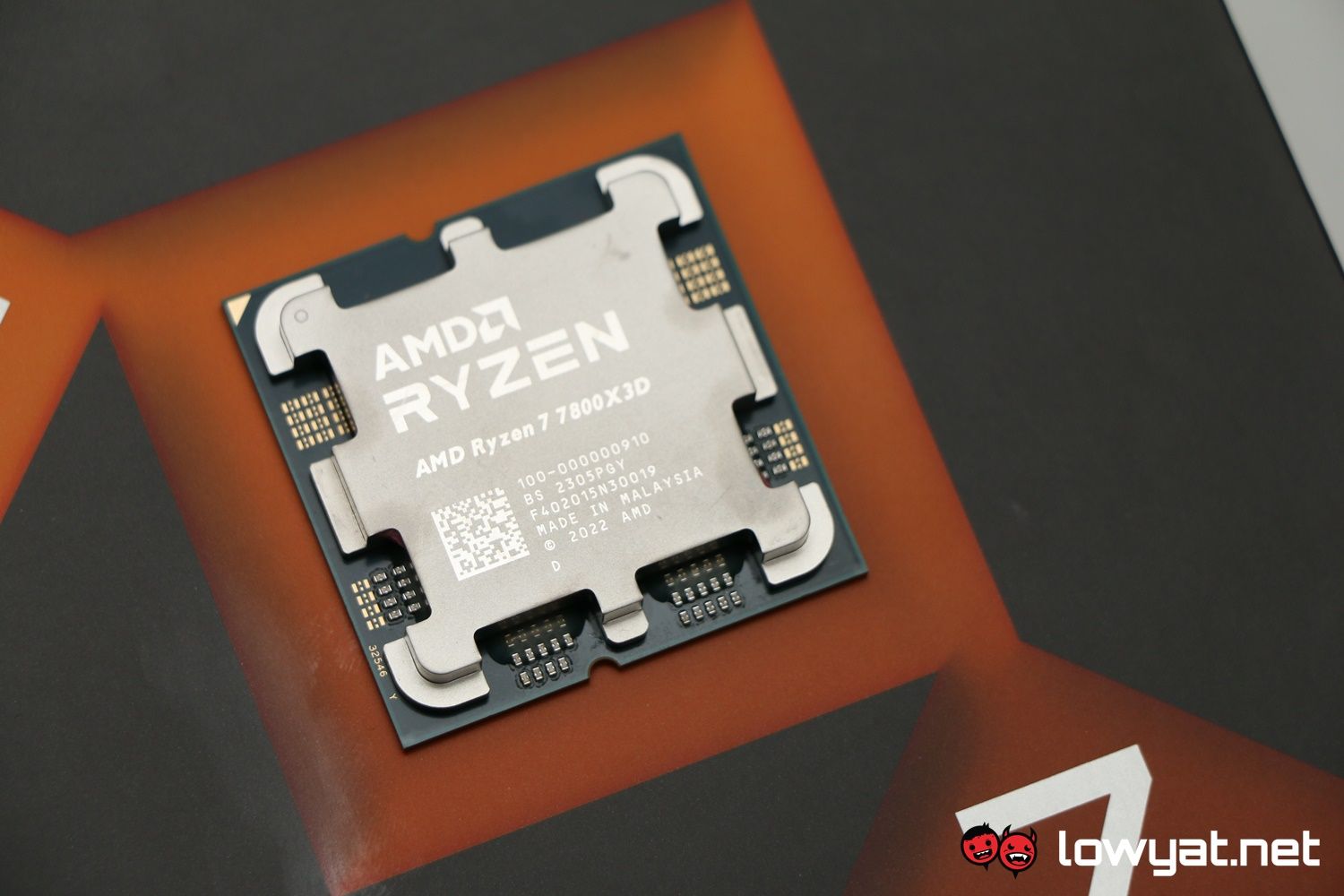AMD’s Ryzen 7 7800X3D recently hit the market, thus completing the collection of its latest 3D V-Cache trio for its 7000X3D series. It is effectively the “entry-level” model of the 7000X3D series but from what I am seeing here, its performance in gaming has me raising the question: what the hell, AMD?
Specifications
Design
I’m going to skim through this part as much as I can, primarily because the 7800X3D is very obviously a cut from the same Zen 4 cloth as its counterparts. Like the Ryzen 9 7950X3D and 7900X3D, the processor is based on the same 5nm TSMC process and even features the same 6nm I/O Die and RDNA2 graphics cores. More to the point, it is the third processor in the 7000X3D series to bear all the trappings of AMD’s new and improved 3D V-Cache chiplet design that has enabled the chipmaker to stack the multiple L3 Caches on top of each other.
Moving on, you’ve got the usual accoutrement of PCIe 5.0 adoption, support for DDR5 memory, and much like the 7950X3D, a TDP of 120W. Like all X3D CPUs, though, the 7800X3D cannot be overclocked or tuned in the traditional sense, but you can still tweak some it through Precision Boost Overdrive 2 (PBO2) and AMD’s EXPO settings, provided you are patient enough.
With that out of the way, let’s get into what you are actually here for: how good is its performance.
Testbench
I’ll be using the ASUS ROG Crosshair X670E Hero motherboard that I have used with all other Ryzen 7000 Series CPUs in their reviews. Additionally, the 7800X3D is being cooled with the Ryujin 360 II AIO cooler that ASUS graciously provided us in the past. Adding on to that, the NVIDIA GeForce RTX 4090 FE is the GPU of choice here, as I have done for the previous Ryzen 7000 Series and Intel 13th Gen CPUs.
Also, and not that I could do so traditionally even if I wanted to, I’ll be running the 7800X3D as is, without any tuning or overclocking done to the processor. Also, I will comparing it against not just the 7950X3D, but also the first generation X3D CPU, the Ryzen 7 5800X3D.
Benchmarks
On a synthetic level, it is clear that the 7800X3D doesn’t quite know how to hold its own against the more powerful 7950X3D, but naturally, it is certainly far more powerful and superior than the 5800X3D, to which it is a direct successor to.
In both Cinebench R20 and R23, the performance of the 7800X3D is overshadowed by the 7950X3D, but again, this isn’t surprising, given that the latter has double the cores of its newly announced sibling. In UL’s PCMark 10 and 3DMark’s respective CPU and physics test, the CPU’s performance is also shown to be just slightly faster than the 5800X3D.
When it came to gaming, which is essentially the hunting grounds of the 7800X3D, its performance does a complete 180 and honestly, gave me a real surprise.
Now, I usually use the phrase “across the board” very loosely, as a way to describe a component’s performance as taking the lead from older generation components in the same category. In this review, that phrase is an exceedingly accurate way of describing the 7800X3D’s gaming prowess.
In both resolution samples and with all my benchmark titles, you can see the 7800X3D maintaining a healthy lead against the 7950X3D, and in the case of DOOM Eternal, its frame count was far, far higher than the usual 400 to 500 fps average I typically see. Even in Cyberpunk 2077, it has its more premium sibling beat by approximately 20 fps in average framerates.
Temperature And Power Consumption
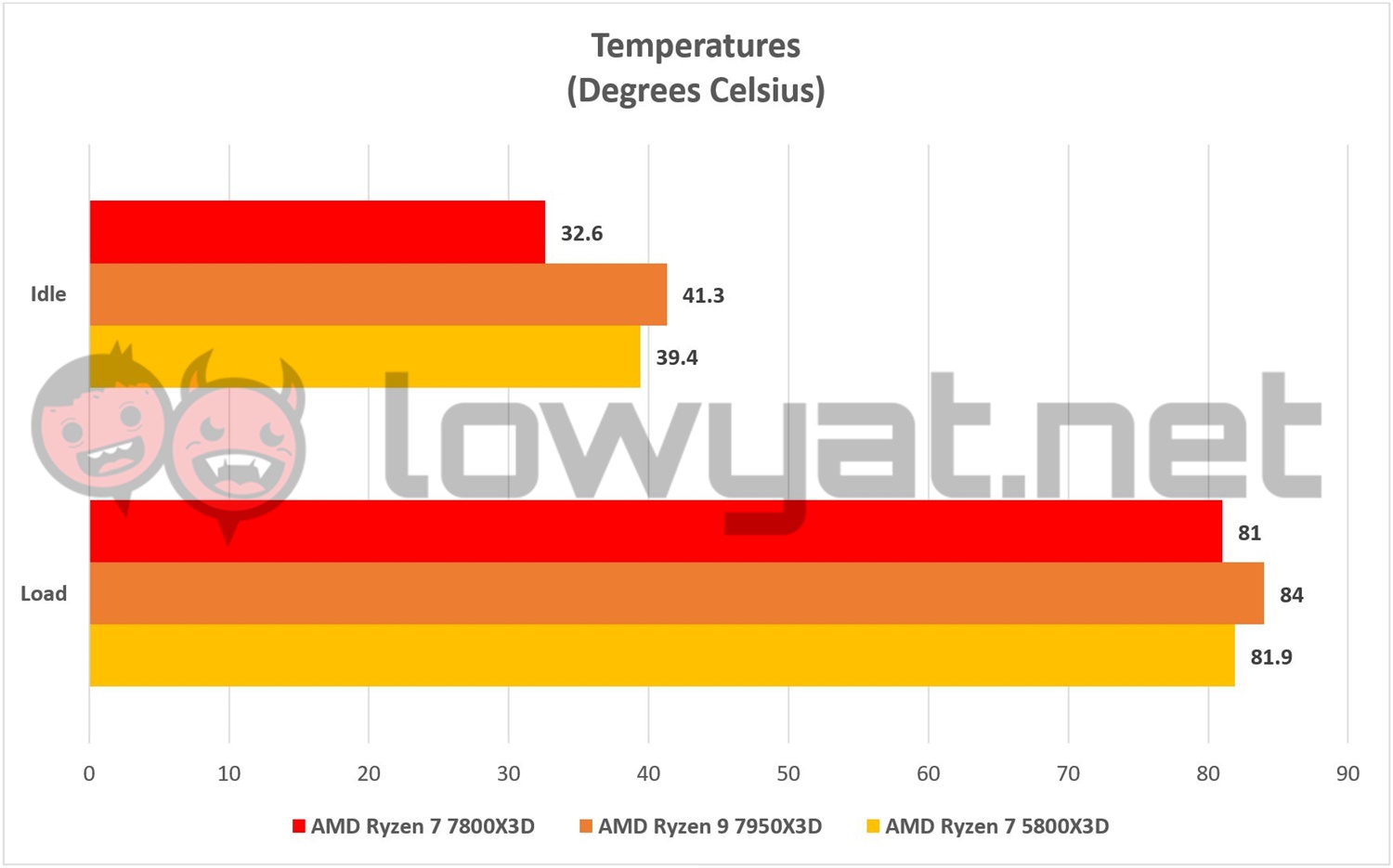 As far as operating temperatures go, the 7800X3D seems to peak at 81°C. That’s about the same as the other X3D CPUs in this review, but surprisingly, it does have a lower idling average temperature of 32°C.
As far as operating temperatures go, the 7800X3D seems to peak at 81°C. That’s about the same as the other X3D CPUs in this review, but surprisingly, it does have a lower idling average temperature of 32°C.
Beyond that, there is nothing out of the ordinary here.
And herein lies the biggest surprise of the entire review: the power draw from the 7800X3D whilst under load. While it is effectively rated to pull 120W off the wall by default, it beat the 7950X3D in gaming while consuming significantly less power than it. We’re looking at more than 50W in power reduction while running the same benchmarks and games. Honestly, this may not seem like much to a greater majority of you but for me, it’s just staggering.
Conclusion




So there you have it. At US$449 (~RM1976), there is little or next to no reason for me not to recommend the AMD Ryzen 7 7800X3D as a core component to an overpowered gaming desktop PC. Honestly, the CPU is proof that components as a whole have reached a tipping point and that you don’t necessarily need to blow the bank in order to enjoy an over-the-top gaming experience.
But again, the existence of the 7800X3D also begets the question that still remains unanswered: why bother with more powerful 3D V-Cache CPUs like the 7950X3D and 7900X3D, especially when they are being outpaced by what is effectively an entry-level tier processors.
That being siad, if you’re not into overclocking and pushing your CPU to the bleeding edge, in order to eke out just a few more frames, then please, consider getting yourself the 7800X3D and an AM5 chipset as part of your next gaming build.
Follow us on Instagram, Facebook, Twitter or Telegram for more updates and breaking news.


